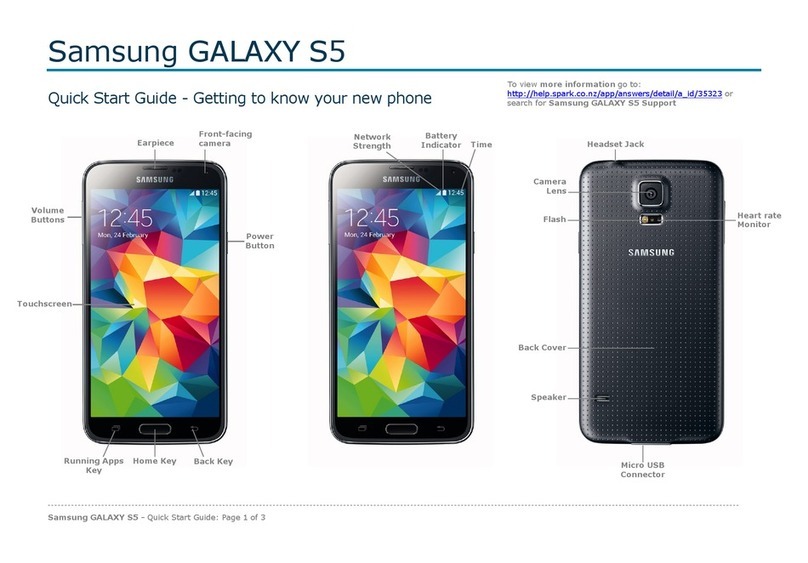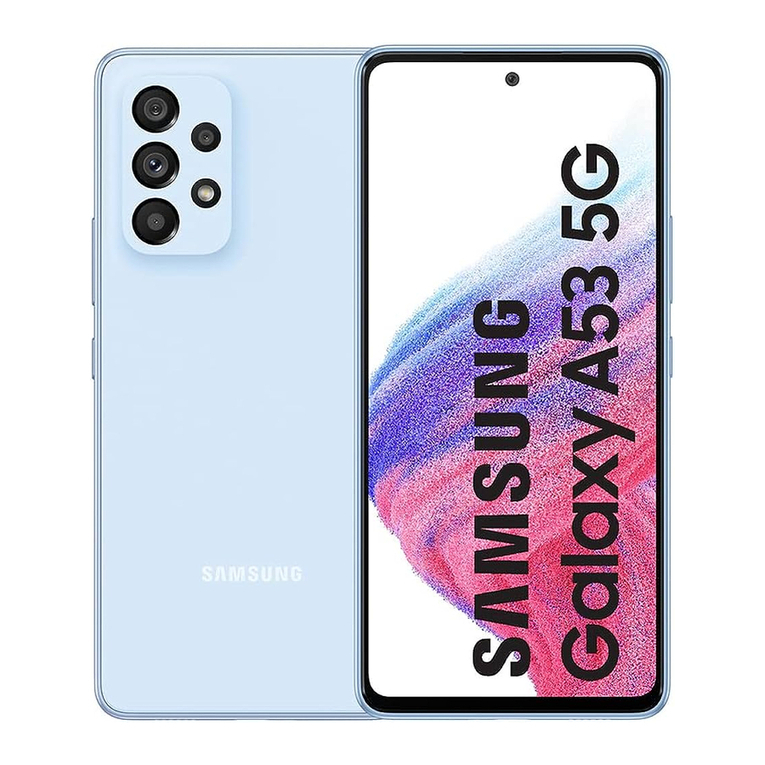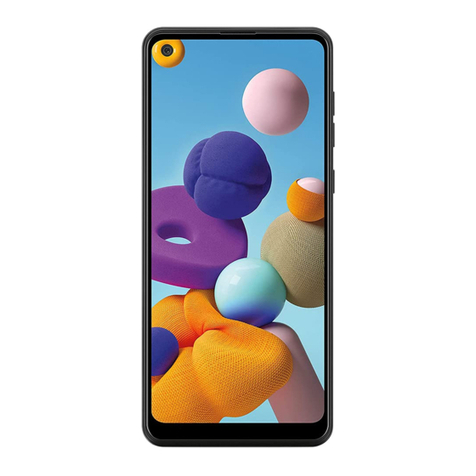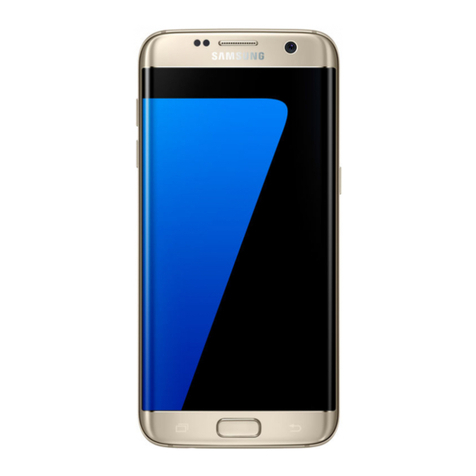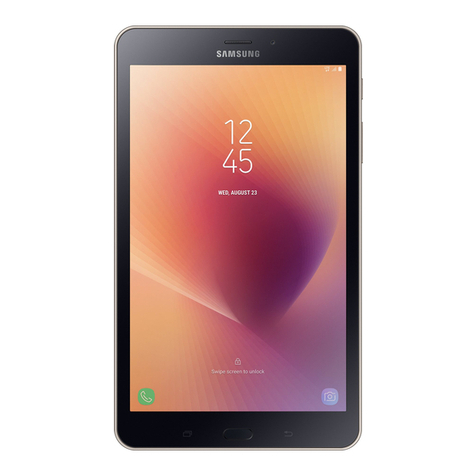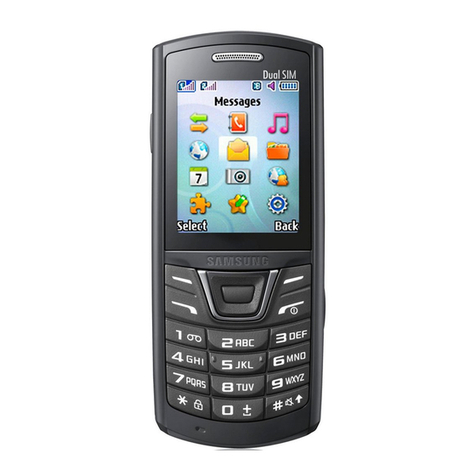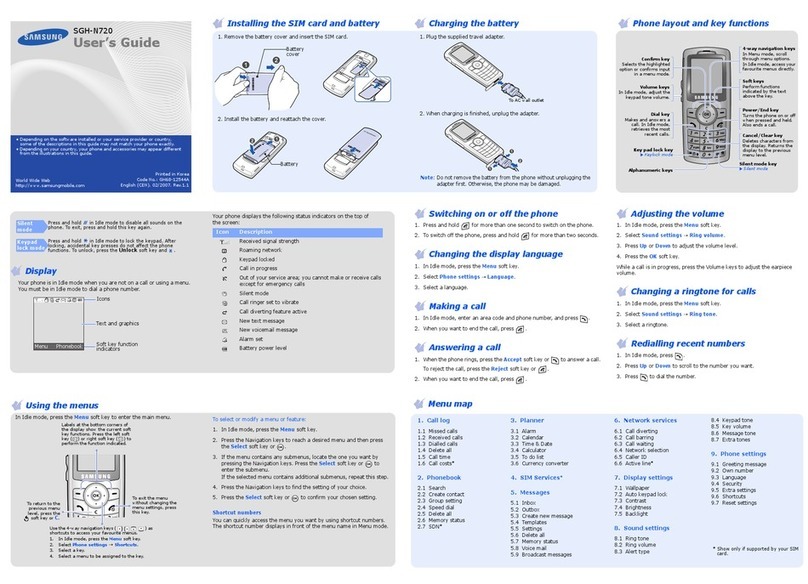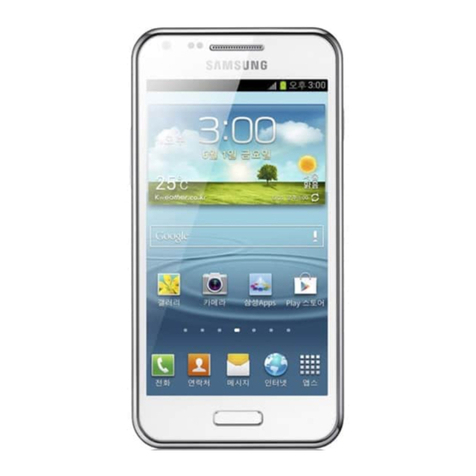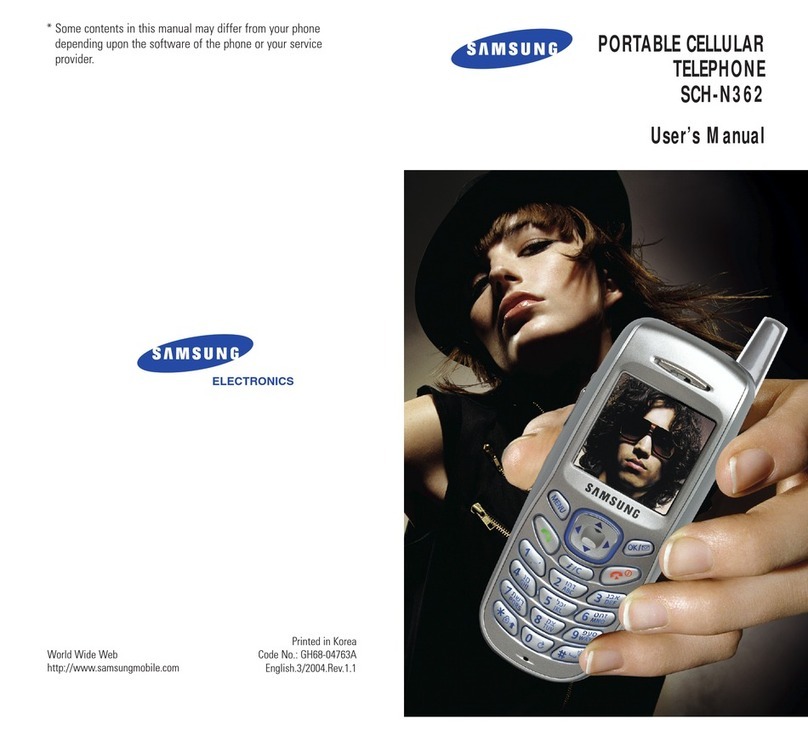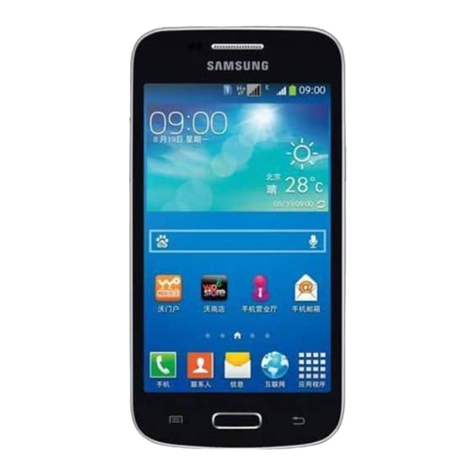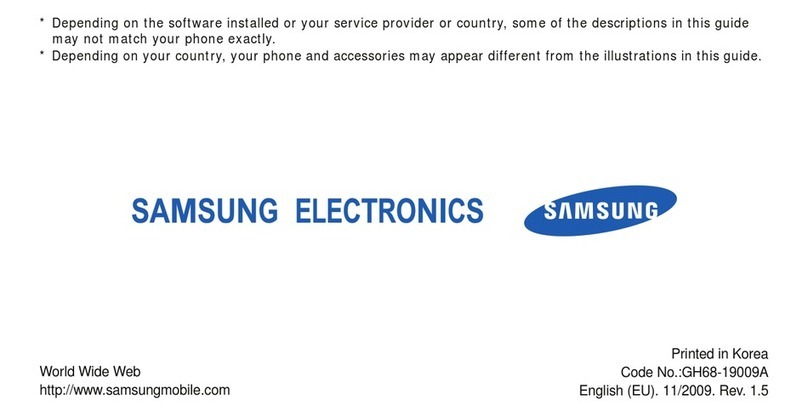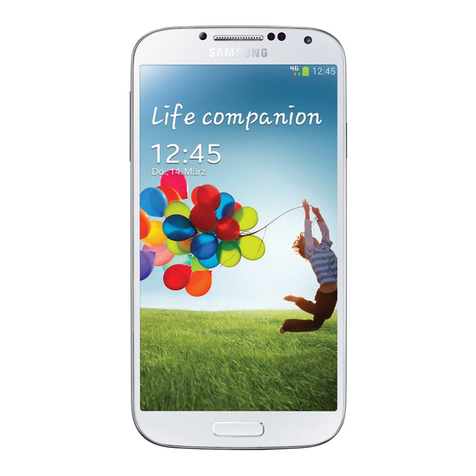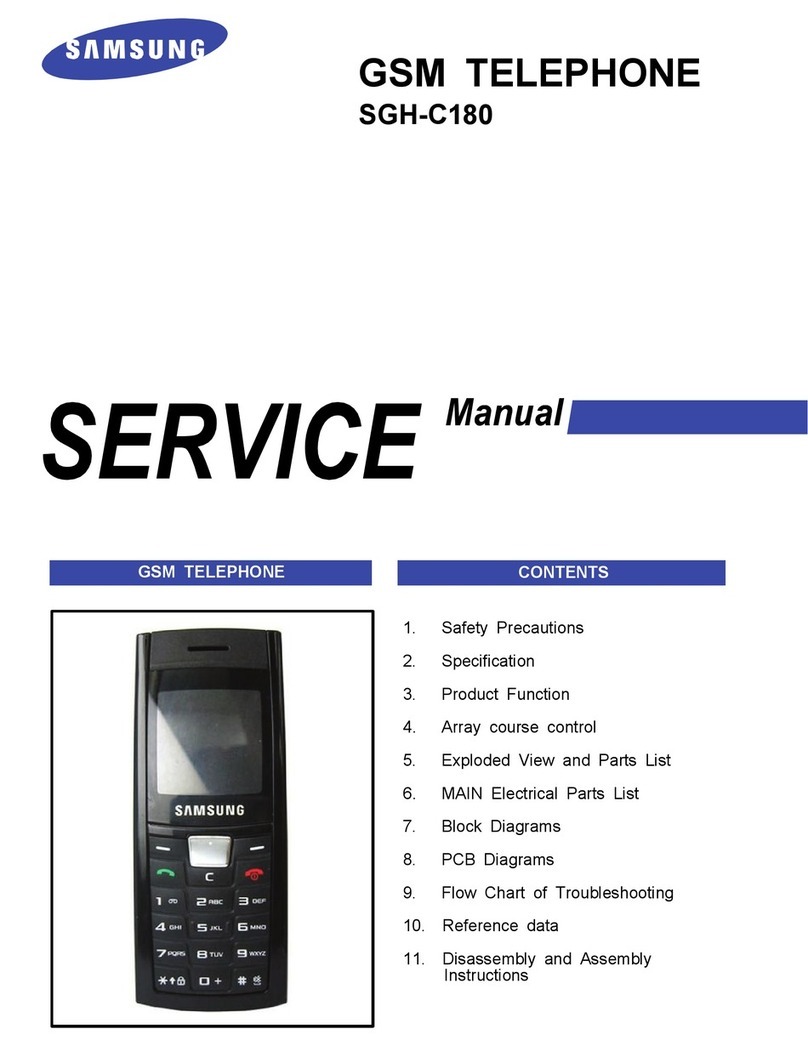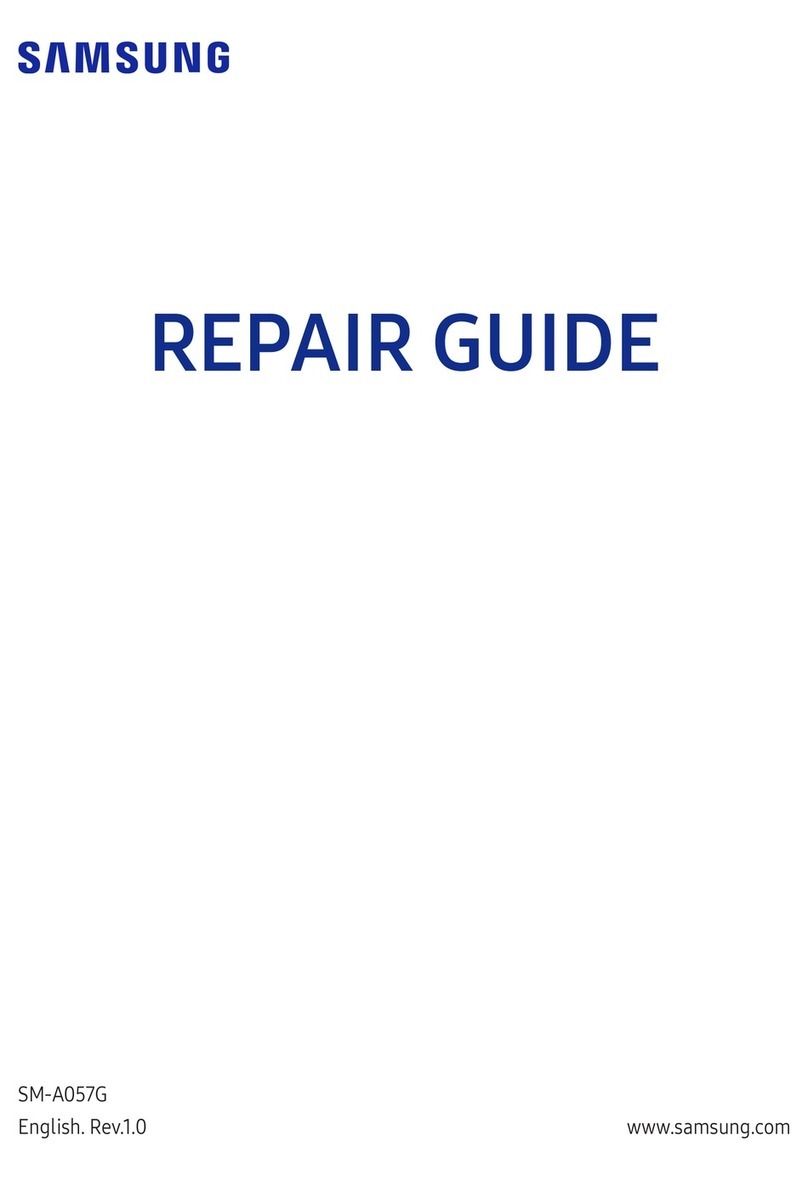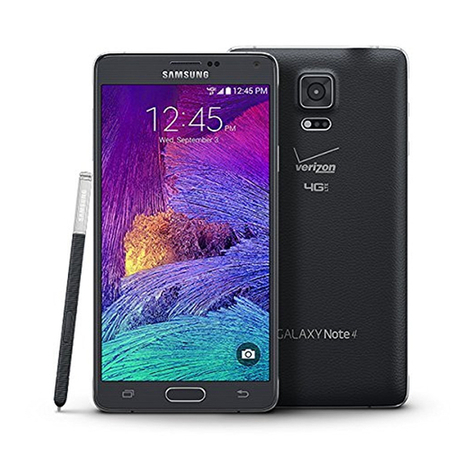
SAMSUNG Proprietary-Contents may change without notice
SGH-V100 Circuit Description
2-5
6. Trident
Trident isconsisted ofARMcore and DSP core.Ithas20K*16bitsRAM144K*16bitsROMintheDSP.Ithas
4K*32bitsROMand 2K*32bitsRAMintheARMcore.DSP isconsisted oftimer, onebit input/outputunit(BIO),JTAG,
EMIand HDS(HardwareDevelopmentSystem).ARMcoreisconsisted ofEMI,PIC(ProgrammableInterruptController),
reset/power/clock unit,DMAcontroller,TIC(TestInterface Controller), peripheralbridge,PPI,SSI(SynchronousSerial
Interface),ACC(Asynchronouscommunicationscontrollers),timer,ADC,RTC(Real-TimeClock)and keyboardinterface.
DSP_AB[0~8],address linesofDSP core and DSP_DB[0~15], datalinesofDSP core are connectedtoCSP1093.
A[0~20],address linesofARMcore and D[0~15], datalinesofARMcore are connectedtomemory, LCDand YMU759.
ICP(InterprocessorCommunication Port)controlsthe communication betweenARMcore and DSP core.
CSROMEN,CSRAMENand CS1NtoCS4NintheARMcore are connectedtoeachmemory. WENand OENcontrol
theprocess ofmemory. ExternalIRQ(InterruptReQuest)signalsfromeach units,suchas,YMU,Ear-jack, Ear-mic and
CSP1093, needthe compatibleprocess.
SomePPIpinshasmany specialfunctions.CP_KB[0~9] receivethestatusfromkeyFPCB and areusedforthe
communicatiosusing IRDA(IRDA_RX/TX/EN)and datalink cable(DEBUG_DTR/RTS/TXD/RXD/CTS/DSR).And
UP_CS/SCLK/SDI,controlsignalsforPSC2006 areoutputtedthrough PPIpins.Ithas signalportforcharging(CHG_DET,
CHG_STAT0),SIM_RESET and FLIP_SNSwithwhichweknowsopen.closedstatusof folder.Ithas JTAG control
pins(TDI/TDO/TCK) forARMcore and DSP core.Itrecieves13MHz clockinCKIpinfromexternalTCXO and receives
32.768KHz clockfromX1RTC.ADC(Analog toDigitalConvertor) partreceivesthestatusoftemperature, batterytype
and battery voltage.And controlsignals(DSP_INT,DSP_IOand DSP_RWN) forDSP core areused. ItenablesmainLCD
and small LCD withDSP IPpins.
7. CSP1093
CSP1093 integratesthetiming and controlfunctionsforGSM2+mobile application withtheADCand DACfunctions.
TheCSP1093 interfacestothetrident, via a 16-bit parallel interface.Itservesastheinterface thatconnectsaDSP tothe
RFcircuitryinaGSM2+mobiletelephone.DSP canload 148 bitsofburstdataintoCSP1093’sinternalregister,and
programCSP1093’sevent timing and controlregisterwiththe exact timetosend theburst.Whenthetiming portion of
the event timing and controlregistermatchestheinternalquarter-bit counterand internalframe counter,the148 bitsin
theinternalregisterareGMSKmodulatedaccording toGSM2+standards.Theresulting phaseinformation istranslated
intoIand Qdifferentialoutputvoltagesthatcan be connected directlytoanRFmodulatorat theTXOPand TXON pins.
TheDSP isnotifiedwhenthetransmission iscompleted. For receiving baseband data,aDSP can programCSP1093’s
event timing and controlregisterwiththe exact timetostartreceiving Iand Qsamplesthrough TXIPand TXINpins.
Whenthat timeisreached, the controlportion ofthe event timing and controlregisterwill start thebaseband receive
section converting Iand Qsamplepairs.Thesamplesarestoredinadouble-bufferedregisteruntil theregistercontains
32 samplepairs.CSP1093 then notifiestheDSP which hasampletimetoreadtheinformation outbeforethenext32
samplepairsarestored. Thevoice band ADCconverterissuesaninterrupt totheDSP wheneverit finishesconverting a
16-bit PCMword. TheDSP thenreadsthenewinputsample and simultaneouslyloadsthevoice band outputDAC
converterwithanewPCMoutputword. Thevoice band outputcan be connected directlytoaspeakerviaAOUTAN and
AOUTAPpinsand be connectedtoaEar-micspeakerviaAOUTBNand AOUTBPpins.
8. X-TAL(13MHz)
This systemusesthe13MHzTCXO,TCO-9141B,Toyocom.AFCcontrolsignalformCSP1093 controlsfrequencyfrom
13MHzx-tal.Itgeneratesthe clockfrequency. Thisclockisinvertedthrough NOTgate,TC7S04FUand isconnectedto
CSP1093. 13MHz clockforYMU759 usesanot-invertedclock. ClockforRFpartsuses sametype.
